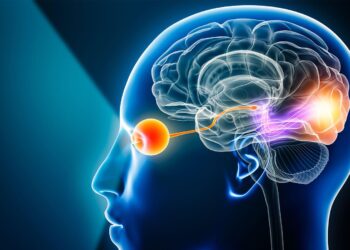SAVANNAH, Georgia — There’s no medical treatment for Charcot-Marie-Tooth (CMT) disease, a debilitating neurologic disorder that’s both progressive and incurable. But now, nerve specialists learned, new potential treatments are moving closer to clinical trials.
Genetic-based therapies are currently in preclinical research phases, and an experimental small-molecule drug has reached phase 3 in humans, neurologists told an audience here at the American Association of Neuromuscular & Electrodiagnostic Medicine (AANEM) 2024. But the neurologists also noted challenges, such as determining the best way to track disease progression — which can be slow — and the need to recruit high numbers of patients for trials.
A Common Genetic Neuromuscular Disorder
As Mario Saporta, MD, PhD, MBA, of the University of Miami, Coral Gables, Florida, explained, CMT is the most common genetic neuromuscular disorder, affecting 1 in 2500 people or about 130,000-150,000 in the United States. “Typically, it’s a length-dependent neuropathy, where your longest nerves would be affected earlier and more severely. That’s why we see foot deformities, inverted champagne bottle legs, and hand atrophy.”
Most patients with CMT in the United States have type 1A, which is linked to duplication of the PMP22 gene. All types lead to axonal degeneration, which appears to be the main cause of functional disability, Saporta said. “Patients become weaker and then progress with time, following the degree of axonal generation that they have.”
As many as 150 genes may eventually be deemed to cause CMT. The high number of genetically different forms makes diagnosis and genetic therapy difficult, he said, but that’s just part of the picture. Variations among mutations mean there’s “probably actually over 1000 different diseases” within CMT from a biologic perspective, he said.
Genetic Therapy
In regard to genetic treatment, Bipasha Mukherjee-Clavin, MD, PhD, of Johns Hopkins University School of Medicine, Baltimore, said a key factor is whether the patient’s form of CMT is passed on in an autosomal dominant or autosomal recessive manner.
“Autosomal dominant conditions are typically caused by gain of function mutations. So that means the goal of our genetic therapeutic would be to reduce expression of the mutated gene,” she said. “In contrast, autosomal recessive conditions are caused by loss-of-function mutations, which means the goal of our genetic therapeutic would be to replace the mutated gene with a normal, wild-type copy.”
A tool like CRISPR could be used to directly edit the part of the genome with a CMT-causing mutation or a viral vector could deliver a healthy, wild-type copy of a gene, she said. These approaches are both being tested.
Another approach is to reduce expression at the RNA level. “RNA therapeutics are FDA-approved for other neuromuscular indications, and you may well be using some of these in your own clinical practice,” she said.
Currently, about seven different projects are in the works on the RNA therapeutics front in CMT, she said, including six focusing on type 1A. Mukherjee-Clavin believes that this subtype is a “great” target because it’s so common, affecting an estimated 1 in 5000 people.
“You actually have enough patients to power a clinical trial,” she said. Also, “it’s a homogeneous population, both in terms of the genetics and in terms of the clinical presentation.”
Preclinical Treatment Approaches
However, there are challenges. Drug delivery to Schwann cells, which insulate axons, is difficult, she said. “The other problem is that we want to avoid overly silencing PMP22 because that runs the theoretical risk of causing a different condition, HNPP [hereditary neuropathy with liability to pressure palsies]. HNPP is caused by deletions of PMP22, so we want to avoid that situation.”
Mukherjee-Clavin highlighted two RNA therapeutic products that she expects to move from preclinical to clinical research soon.
One is TVR110 by Armatus Bio, a microRNA intrathecal injection product, which aims to reduce PMP22 overexpression. “It targets basically reduces PMP22 mRNA expression and then normalizes the amount of PMP22 protein that is ultimately generated,” she said.
The other therapy, a small interfering RNA intravenous product delivered to Schwann cells, is being developed by DTx Pharma/Novartis.
Outside of the RNA arena, “there are a number of other programs that are in the preclinical phases that I think will be moving through this pipeline,” Mukherjee-Clavin said. “We’ll see if some of these enter first-in-human clinical trials.”
Meanwhile, the University of Miami’s Saporta highlighted small-molecule strategies that target a subtype of CMT called sorbitol dehydrogenase (SORD) deficiency that’s caused by mutations in the SORD gene. He noted that Applied Therapeutics is testing an investigational drug called govorestat (AT-007) in 56 patients in a double-blind, randomized, placebo-controlled phase 3 registrational study. The company recently reported that interim 12-month results are promising.
Saporta disclosed consulting for DTx Pharma/Novartis, Applied Therapeutics, and Pharnext. Mukherjee-Clavin had no disclosures.
Source link : https://www.medscape.com/viewarticle/last-treatment-sight-charcot-marie-tooth-disease-2024a1000iys?src=rss
Author :
Publish date : 2024-10-17 09:36:45
Copyright for syndicated content belongs to the linked Source.














